Discussion on Improving the Third Order Intersection Point of Radio Frequency Low Noise Amplifier
-
摘要: 随着现代通信技术的进步,特别是4G,5G等无线移动通信的高速发展,多正交振幅调制(QAM)等高频谱利用率的调制方式得到广泛应用,对无线通信系统提出了更高、更严格的线性要求。射频低噪声放大器(RF LNA)作为射频前端(RF FEM)的第1个有源器件,其非线性特征直接影响系统的信号质量和动态范围。以3阶交调为例,低噪声放大器需要足够的输入3阶交截点,以确保即使在强干扰信号下也能提供预期的性能。基于3阶非线性模型,该文简要分析了3阶交调的理论模型,梳理了提高3阶交截点的方法,归纳研究了近年来相关的研究成果与进展,并展望了未来的发展趋势。Abstract: With the progress of modern communication technology, especially the rapid development of 4G, 5G and other wireless mobile communications, modulation methods with high spectrum efficiency such as multi-Quadrature Amplitude Modulation (QAM) have been widely used, which puts forward higher and stricter linear requirements for wireless communication systems. The Radio Frequency Low Noise Amplifier(RF LNA)is the first active device of the RF Front-End Module(RF FEM), and the signal quality and dynamic range of the system are directly affected by the the nonlinear characteristics of the LNA. Taking the 3rd-order intermodulation as an example, a sufficient input 3rd-order intercept point is required in LNA to ensure expected performance even with strong interfering signals. Based on the 3rd-order nonlinear model, in this article, the theoretical model of the 3rd-order intermodulation is analyzed briefly, the methods to improve the 3rd-order intercept point are sorted out, the relevant research results and progress in recent years are summarized and studied , and the future development trend is prospected.
-
图 5 广义DS结构[50]
图 7 WRDS技术g3抵消窗口[65]
图 10 有源后失真线性技术[83]
表 1 提高IIP3方法对应发挥作用的非线性项
方法 最佳栅极偏置技术 传统导数叠加技术 改进导数叠加技术 互补|差分导数叠加 预失真电路 后失真电路 前馈技术 反馈技术 g2 △ △ △ △ △ g3 △ △ △ △ △ △ △ △ g2混叠 △ 高阶非线性(>3) △ △ 表 2 不同线性化方法对比
技术方法 文献来源 工艺节点 频率(GHz) IIP3
△IIP3(dBm)NF
△NF(dB)Gain
△Gain(dB)Power
△Power(mW)最佳栅极偏置技术 ISCAS 2004 [43] 0.25 μm CMOS 0.880 10.5|NA 1.8|NA 14.6|NA 5.4|NA 传统导数叠加技术 ISSCC 2003 [51] 0.25 μm CMOS 2.000 16.0|+13 2.8|–0.1 14|–0.8 9.4|–1.4 改进导数叠加技术 TMTT 2005 [60] 0.25 μm CMOS 0.900 22.0|+20.0 1.65|–0.25 15.5|–0.5 9.3|–0.3 互补|差分导数叠加 ISSCC 2009 [66] 0.18 μm CMOS 0.100~1.200 10.6~14.3 2.9–3.5 17.5 21.3 预失真电路 TCSII 2006 [77] 0.13 μm CMOS 5.000 19.7|+11.3 1.59|–0.45 10.6|–1 15.4|–0.1 后失真电路 JSSC 2006 [83] 0.25 μm CMOS 0.869~0.894 8.0|+5.75 1.2|–0.15 16.2|–1.3 31.2| 前馈技术 ISSCC 2001 [89] 0.35 μm CMOS 0.900 5.0|+13.0 2.6|–0.2 18|–2.5 22.5|–11.25 负反馈技术 ASSCC 2006 [101] 0.09μm CMOS 0.500~6.500 –8.0|+6a 2.5|+0.5a 23|–2a 21|+21a 注:表中符号+表示性能优化,–表示恶化。a:所列对比指标为该文献与其前期已发表工作[107]的指标对比。 表 3 不同线性化方法总结
技术方法 PVT敏感 宽带适用 工程应用情况与指导意义 最佳栅极偏置技术 强 差 受频率、环境等因素限制,较少单独使用,一般与其他方法技术相结合。 传统导数叠加技术 较强 适中 存在输入信号功率范围窄、影响输入等问题,其改进型应用更为广泛。 改进导数叠加技术 适中 较好 改善了DS 2阶互调、输入功率范围等限制短板,进一步拓展了DS技术的适用范围。 互补|差分导数叠加 适中 较好 从结构上可以抑制2阶非线性的问题,且更适用于宽带应用,但易受电路失配等影响。 预失真电路 较弱 好 预失真电路原理简单,其实现结构往往也不复杂,具有较好的宽带、工艺拓展性。使用中需要综合考虑噪声、功耗等指标的限制。 后失真电路 较弱 好 适合宽带高线性应用,使用中需要用中通常需要综合考虑面积、功耗等限制。 前馈技术 较强 好 可实现高阶非线性抵消,同时适合宽带应用。但难以满足面积小、低功耗的设计需要。 负反馈技术 较弱 好 适用于宽带应用,受环境因素变化影响小,使用灵活,易于和其他电路结构相结合。需格外注意对噪声的影响。 -
[1] LE L D and NGUYEN H H. Iterative self-interference mitigation in full-duplex wireless communications[J]. Wireless Personal Communications, 2019, 109(4): 2663–2682. doi: 10.1007/s11277-019-06702-6 [2] ZOU Y, RAEESi O, ANTIllA L, et al. Impact of power amplifier nonlinearities in multi-user massive MIMO downlinc[C]. IEEE Globecom Wokshops, San Diego, USA, 2015, 1–7. doi: 10.1109/GLOCOMW.2015.7414011. [3] TAPIO V, SONKKI M, and JUNTTI M. Self-interference cancelation in the presence of non-linear power amplifier and receiver IQ imbalance[J]. EURASIP Journal on Wireless Communications and Networking, 2020, 2020(1): 127. doi: 10.1186/s13638-020-01743-z [4] HOSSAIN N, SHIMAMURA T, and RYU H G. Nonlinear characteristics of DFT-spread WR-OFDM system for spectrum-efficient communications[J]. IEIE Transactions on Smart Processing and Computing, 2019, 8(6): 490–498. doi: 10.5573/IEIESPC.2019.8.6.490 [5] Nguyen M T, Nefedov V I, Kozlovsky I V, et al. Analysis of the Raman spectrum of high-power amplifiers of wireless communication systems[J].[J]. Russian Technological Journal, , 2020, 7(6): 96–105. [6] TRULLS X, MATEO D, BOFILL A. A small-area inductorless configurable wideband LNA with high dynamic range[J]. Microelectronics Journal, 2012, 43(3): 198–204. [7] CHEN Mingzheng, TANG Wankai, DAI Junyan, et al. Accurate and broadband manipulations of harmonic amplitudes and phases to reach 256 QAM millimeter-wave wireless communications by time-domain digital coding metasurface[J]. National Science Review, 2022, 9(1): nwab134. doi: 10.1093/nsr/nwab134 [8] REKHA T K. Design and development of compact microwave low pass filters with higher order harmonics suppression for wireless communication system[D]. [Ph. D. dissertation], Cochin University of Science and Technology, 2019. [9] YADAV N, KHAN M J, SINGH J, et al. A 0.533 dB noise figure and 7 mW narrowband low noise amplifier for GPS application[C]. NATH V. Proceedings of the International Conference on Microelectronics, Computing & Communication Systems. Singapore: Springer, 2018: 305–315. [10] RAZAVI B. RF Microelectronics[M]. 2nd ed. Upper Saddle River: Prentice Hall, 2012. [11] CHEN C N, CHEN Ying, KUO Taiyu, et al. A 35–39 GHz CMOS linearized receiver with 2 dBm IIP3 and 16.8 dBm OIP3 for the 5G systems[C]. Proceedings of the 14th European Microwave Integrated Circuits Conference, Paris, France, 2019: 92–95. [12] CHEN Y C. RF front-end nonlinearity and wireless communication system performance[D]. [Ph. D. dissertation], Northwestern University, 2000. [13] 王紫宽. 基于Volterra级数的高线性度LNA分析与设计[D]. [硕士论文], 上海交通大学, 2017.WANG Zikuan. Analysis and design of high linearity LNA based on Volterra series[D]. [Master dissertation], Shanghai Jiao Tong University, 2017. [14] LEE C, YOO J, and PARK C. A linearization method with optimizing impedance of envelope signal to suppress IMD3 of RF CMOS power amplifier[J]. Microwave and Optical Technology Letters, 2021, 63(2): 450–454. doi: 10.1002/mop.32629 [15] TERROVITIS M T and MEYER R G. Intermodulation distortion in current-commutating CMOS mixers[J]. IEEE Journal of Solid-State Circuits, 2000, 35(10): 1461–1473. doi: 10.1109/4.871323 [16] YU Wei, SEN S, and LEUNG B H. Distortion analysis of MOS track-and-hold sampling mixers using time-varying Volterra series[J]. IEEE Transactions on Circuits and Systems II:Analog and Digital Signal Processing, 1999, 46(2): 101–113. doi: 10.1109/82.752910 [17] 南敬昌, 刘元安, 李新春, 等. 记忆效应非线性功放扩展Volterra模型分析与构建[J]. 电子与信息学报, 2008, 30(8): 2021–2024. doi: 10.3724/SP.J.1146.2007.00121NAN Jingchang, LIU Yuanan, LI Xinchun, et al. Analysis and modeling on expanding Volterra-series behavior model for nonlinear power amplifier with memory effects[J]. Journal of Electronics &Information Technology, 2008, 30(8): 2021–2024. doi: 10.3724/SP.J.1146.2007.00121 [18] YU Haoran, EL-SANKARY K, and EL-MASRY E I. Distortion analysis using Volterra series and linearization technique of nano-scale bulk-driven CMOS RF amplifier[J]. IEEE Transactions on Circuits and Systems I:Regular Papers, 2015, 62(1): 19–28. doi: 10.1109/TCSI.2014.2341116 [19] 南敬昌, 赵景梅, 袁杰. 基于RBF神经网络的射频功放行为模型研究[J]. 计算机工程与应用, 2011, 47(8): 125–127,134. doi: 10.3778/j.issn.1002-8331.2011.08.037NAN Jingchang, ZHAO Jingmei, and YUAN Jie. Research on behavioral models for RF power amplifier based on RBF neural network[J]. Computer Engineering and Applications, 2011, 47(8): 125–127,134. doi: 10.3778/j.issn.1002-8331.2011.08.037 [20] 任建伟, 南敬昌, 丛密芳. 基于神经网络的射频功放行为模型研究[J]. 计算机应用研究, 2011, 28(3): 845–847. doi: 10.3969/j.issn.1001-3695.2011.03.012REN Jianwei, NAN Jingchang, and CONG Mifang. Research on behavioral models for RF power amplifier based on neural network[J]. Application Research of Computers, 2011, 28(3): 845–847. doi: 10.3969/j.issn.1001-3695.2011.03.012 [21] 江明玉, 刘太君, 叶焱, 等. 基于广义改进型RBF网络的射频功放非线性建模[J]. 移动通信, 2018, 42(3): 64–69. doi: 10.3969/j.issn.1006-1010.2018.03.012JIANG Mingyu, LIU Taijun, YE Yan, et al. Nonlinear modeling of RF power amplifier based on generalized improved RBF network[J]. Mobile Communications, 2018, 42(3): 64–69. doi: 10.3969/j.issn.1006-1010.2018.03.012 [22] SCHUARTZ L, FREIRE L B C, HARA A T, et al. Modified indirect learning applied to neural network-based pre-distortion of a concurrent dual-band CMOS power amplifier[J]. Analog Integrated Circuits and Signal Processing, 2021, 106(1): 277–292. doi: 10.1007/s10470-020-01741-7 [23] 陈林. 基于人工神经网络的射频电路建模研究[D]. [硕士论文], 电子科技大学, 2021.CHEN Lin. Research on RF circuit modeling based on artifical neural network[D]. [Master dissertation], University of Electronic Science and Technology of China, 2021. [24] DONG L I, GUO Y S. Behavioral Modeling of Transient and Steadystate of RF Power Amplifier Based on Fuzzy Logic Systems[J]. Chinese Journal of Electron Devices, 2009, 32(2): 463–466. [25] 李栋, 郭裕顺. 基于模糊逻辑的射频功放建模[J]. 电子器件, 2009, 32(2): 463–466. doi: 10.3969/j.issn.1005-9490.2009.02.058LI Dong and GUO Yushun. Behavioral modeling of transient and steadystate of RF power amplifier based on fuzzy logic systems[J]. Chinese Journal of Electron Devices, 2009, 32(2): 463–466. doi: 10.3969/j.issn.1005-9490.2009.02.058 [26] MURPHY D, HAFEZ A, MIRZAEI A, et al. A blocker-tolerant wideband noise-cancelling receiver with a 2dB noise figure[C]. IEEE Internatinal Solid-State Circuits Coference, San Francisco, USA, 2012, 74–76. doi: 10.1109/ISSCC.2012.6176935. [27] HUNZIKER S and BAECHTOLD W. Simple model for fundamental intermodulation analysis of RF amplifiers and links[J]. Electronics Letters, 1996, 32(19): 1826–1827. doi: 10.1049/el:19961218 [28] 徐元中, 刘凌云. 射频MOS管的非线性特性分析与线性度提高技术[J]. 电子技术应用, 2015, 41(4): 56–59. doi: 10.16157/j.issn.0258-7998.2015.04.012XU Yuanzhong and LIU Lingyun. Nonlinear analysis and linearity enhancement techniques of RF MOS[J]. Application of Electronic Technique, 2015, 41(4): 56–59. doi: 10.16157/j.issn.0258-7998.2015.04.012 [29] 於建生, 桑磊, 孙世滔, 等. 宽带射频功放晶体管非线性输出电容研究[J]. 电子科技, 2015, 28(4): 102–105. doi: 10.16180/j.cnki.issn1007-7820.2015.04.028YU Jiansheng, SANG Lei, SUN Shitao, et al. Study of nonlinear output capacitance of the wide-band power amplifier[J]. Electronic Science and Technology, 2015, 28(4): 102–105. doi: 10.16180/j.cnki.issn1007-7820.2015.04.028 [30] SALIH A A, ZEEBAREE S R M, ABDULRAHEEM A S, et al. Evolution of mobile wireless communication to 5G revolution[J]. Technology Reports of Kansai University, 2020, 62(5): 2139–2151. [31] WANG Fei, WANG A, and WANG Hua. A 22–37 GHz broadband compact linear mm-wave power amplifier supporting 64-/256-/512-QAM modulations for 5G communications[C]. Proceedings of 2020 IEEE/MTT-S International Microwave Symposium (IMS), Los Angeles, USA, 2020: 1105–1108. [32] NGUYEN H N, LE V H, GWAK K U, et al. Low power, high linearity wideband receiver front-end for LTE application[C]. Proceedings of the 13th International Conference on Advanced Communication Technology, Gangwon, Korea, 2011: 640–643. [33] ZHANG Changchun, WU Yingjian, ZHANG Peng, et al. A CMOS dual-mode high-dynamic-range wideband receiver RF front-end[J]. Journal of Semiconductor Technology and Science, 2018, 18(5): 616–625. doi: 10.5573/JSTS.2018.18.5.616 [34] TAO Jian, FAN Xiangning, and KUAN Bao. A single-ended wideband reconfigurable receiver front-end for multi-mode multi-standard applications in 0.18µm CMOS[J]. High Technology Letters, 2019, 25(1): 1–7. [35] KIM B K, IM D, CHOI J, et al. A Highly Linear 1 GHz 1.3 dB NF CMOS Low-Noise Amplifier With Complementary Transconductance Linearization[J]. IEEE Joural of Solid-State Circuits, 2014, 49(6): 1286–1302. doi: 10.1109/JSSC.2014.2319262. [36] MUJEEB A, YUWONO S , LEE J S , et al. Highly linear CMOS low noise amplifier with IIP3 boosting technique[C]// SoC Design Conference, 2008. ISOCC '08. International. IEEE, 2009. [37] BASHIR M A, YU Yiming, WU Yunqiu, et al. A high linearity low noise amplifier for 5G front-end modules[C]. Proceedings of 2019 International Conference on Microwave and Millimeter Wave Technology (ICMMT), Guangzhou, China, 2019: 1–3. [38] NOH S H and RYU J Y. Study for linearity improvement of GHz-band low noise amplifier[J]. Journal of KIIT, 2019, 17(9): 41–47. doi: 10.14801/jkiit.2019.17.9.41 [39] SALIM Z S M, MUHAMAD M, HUSSIN H, et al. CMOS LNA linearization employing multiple gated transistors[C]. Proceedings of the 13th International Conference on Telecommunication Systems, Services, and Applications (TSSA), Bali, Indonesia, 2019: 137–140. [40] CHEN W H, LIU Gang, ZDRAVKO B, et al. A highly linear broadband CMOS LNA employing noise and distortion cancellation[J]. IEEE Journal of Solid-State Circuits, 2008, 43(5): 1164–1176. doi: 10.1109/JSSC.2008.920335 [41] TANAKA S. Some non-linear operations in linear power amplifier for mobile applications[C]. Proceedings of 2017 IEEE International Symposium on Radio-Frequency Integration Technology (RFIT), Seoul, Korea, 2017: 107–109. [42] TOOLE B, PLETT C, and CLOUTIER M. RF circuit implications of moderate inversion enhanced linear region in MOSFETs[J]. IEEE Transactions on Circuits and Systems I:Regular Papers, 2004, 51(2): 319–328. doi: 10.1109/TCSI.2003.822400 [43] APARIN V, BROWN G, and LARSON L E. Linearization of CMOS LNA’s via optimum gate biasing[C]. Proceedings of 2004 IEEE International Symposium on Circuits and Systems, Vancouver, Canada, 2004: IV-748. [44] SILVA O, ANGELOV I, and ZIRATH H. Octave band linear MMIC amplifier with +40-dBm OIP3 for high-reliability space applications[J]. IEEE Transactions on Microwave Theory and Techniques, 2016, 64(7): 2059–2067. doi: 10.1109/TMTT.2016.2574856 [45] KOBAYASHI K W. Bias optimized IP2 & IP3 linearity and NF of a decade-bandwidth GaN MMIC feedback amplifier[C]. Proceedings of 2012 IEEE Radio Frequency Integrated Circuits Symposium, Montreal, Canada, 2012: 479–482. [46] EL-KHATIB Z, MACEACHERN L, and MAHMOUD S A. CMOS interleaved distributed 2×3 matrix amplifier employing active post distortion and optimum gate bias linearization technique[C]. Proceedings of the CCECE 2010, Calgary, Canada, 2010: 1–4. [47] RYU K K, KIM Y H, and KIM S C. Low noise and high linearity GaAs LNA MMIC with novel active bias circuit for LTE applications[J]. Journal of Information and Communication Convergence Engineering, 2017, 15(2): 112–116. doi: 10.6109/jicce.2017.15.2.112 [48] REN Jiangchuan, DAI Ruofan, HE Jun, et al. A high power CMOS cascode power amplifier with adaptive dynamic bias control for linearity enhancement[J]. Microwave and Optical Technology Letters, 2020, 62(7): 2451–2457. doi: 10.1002/mop.32343 [49] WEBSTER D R, HAIGH D G, SCOTT J B, et al. Derivative superposition-a linearisation technique for ultra broadband systems[C]. Proceedings of the IEE Colloquium Wideband Circuits, Modelling and Techniques, London, UK, 1996–1009. [50] EL-KHATIB Z, MACEACHERN L, and MAHMOUD S A. CMOS distributed paraphase amplifier employing derivative superposition linearization for wireless communications[C]. Proceedings of the 52nd IEEE International Midwest Symposium on Circuits and Systems, Cancun, Mexico, 2009: 1006–1009. [51] YOUN Y S, CHANG J H, KOH K J, et al. A 2GHz 16dBm IIP3 low noise amplifier in 0.25μm CMOS technology[C]. Proceedings of 2003 IEEE International Solid-State Circuits Conference, San Francisco, USA, 2003: 452–507. [52] KIM T W, KIM B, and LEE K. Amplifier circuit having improved linearity and frequency band using a MGTR[P]. EP, 1672782-A1, 2004. [53] GUO Benqing and CHEN Jun. A wideband common-gate CMOS LNA employing complementary MGTR technique[J]. Microwave and Optical Technology Letters, 2017, 59(7): 1668–1671. doi: 10.1002/mop.30601 [54] JUNG D, ZHAO Huan, and WANG Hua. A CMOS highly linear Doherty power amplifier with multigated transistors[J]. IEEE Transactions on Microwave Theory and Techniques, 2019, 67(5): 1883–1891. doi: 10.1109/TMTT.2019.2899596 [55] GUO Benqing, GONG Jing, WANG Yao. A wideband differential linear low-noise transconductance amplifier with active-combiner feedback in complementary mgtr configurations[J]. Circuits and Systems I: Regular Papers, 2020, 99: 1–44. [56] DEHQAN A R, KENARROODI M, KARGARAN E, et al. Design of low-voltage low-power Dual-Band LNA with using DS method to improve linearity[C]. Proceedings of the 20th Iranian Conference on Electrical Engineering, Tehran, Iran, 2012: 88–91. [57] ZHANG Zhichao, KHAN M R, CHEN Li, et al. A broadband high linear LNA for GSM/LTE wireless communications[C]. Proceedings of the 25th IEEE Canadian Conference on Electrical and Computer Engineering (CCECE), Montreal, Canada, 2012: 1–4. [58] LI Zhenrong, WANG Simin, LI Zhen, et al. A 0.5 to 6 GHz wideband cascode LNA with enhanced linearity by employing resistive shunt-shuntfeedback and derivative superposition[J]. Microwave and Optical Technology Letters, 2020, 62(10): 3157–3162. doi: 10.1002/mop.32435 [59] HARI K K, SAT P, KASI R B, et al. Highly linear inductorless asymmetric capacitive cross-coupled wideband balun-LNAs[J]. Computers & Electrical Engineering, 2020, 83: 106614. doi: 10.1016/j.compeleceng.2020.106614 [60] APARIN V and LARSON L E. Modified derivative superposition method for linearizing FET low-noise amplifiers[J]. IEEE Transactions on Microwave Theory and Techniques, 2005, 53(2): 571–581. doi: 10.1109/TMTT.2004.840635 [61] GANESAN S, SANCHEZ-SINENCIO E, and SILVA-MARTINEZ J. A highly linear low-noise amplifier[J]. IEEE Transactions on Microwave Theory and Techniques, 2006, 54(2): 4079–4085. doi: 10.1109/TMTT.2006.885889 [62] RUNGTA A and KANDPAL K. IIP3 improvement in subthreshold LNAs using modified derivative superposition technique for IoT applications[C]. Proceedings of the 32nd International Conference on VLSI Design and 2019 18th International Conference on Embedded Systems (VLSID), Delhi, India, 2019: 130–134. [63] RAFATI M, QASEMI S R, and AMIRI P. A 0.65 V, linearized cascade UWB LNA by application of modified derivative superposition technique in 130 nm CMOS technology[J]. Analog Integrated Circuits and Signal Processing, 2019, 99(3): 693–706. doi: 10.1007/s10470-019-01423-z [64] SHIN H, KIM J, and KIM N. Source degenerated derivative superposition method for linearizing RF FET differential amplifiers[J]. IEEE Transactions on Microwave Theory and Techniques, 2015, 63(3): 1026–1035. doi: 10.1109/TMTT.2015.2391101 [65] GAO Wei, CHEN Zhiming, LIU Zicheng, et al. A highly linear low noise amplifier with wide range derivative superposition method[J]. IEEE Microwave and Wireless Components Letters, 2015, 25(12): 817–819. doi: 10.1109/LMWC.2015.2496793 [66] IM D, NAM I, KIM H T, et al. A wideband CMOS low noise amplifier employing noise and IM2 distortion cancellation for a digital TV tuner[J]. IEEE Journal of Solid-State Circuits, 2009, 44(3): 686–698. doi: 10.1109/JSSC.2008.2010804 [67] YARAHMADI A and JANNESARI A. Design of a highly linear gain stage with complementary derivative superposition technique[J]. Wireless Personal Communications, 2019, 107(4): 1709–1716. doi: 10.1007/s11277-019-06352-8 [68] YAGHOUTI B D and YAVANDHASANI J. A high linearity low power low-noise amplifier designed for ultra-wide-band receivers[J]. Analog Integrated Circuits and Signal Processing, 2021, 107(1): 109–120. doi: 10.1007/s10470-020-01783-x [69] GLADSON S C, PRAVEEN R, and BHASKAR M. A 0.1–2.75 GHz high-linear low-noise transconductance amplifier for high-performance multi-standard wireless applications[J]. Microsystem Technologies, 2020, 26(7): 2279–2295. doi: 10.1007/s00542-019-04643-5 [70] TARIGHAT A P and YARGHOLI M. Low power active shunt feedback CMOS low noise amplifier for wideband wireless systems[J]. Integration, 2019, 69: 189–197. doi: 10.1016/j.vlsi.2019.04.001 [71] GUO Benqing, CHEN Jun, CHEN Hongpeng, et al. An inductorless noise-cancelling CMOS LNA using wideband linearization technique[C]. Proceedings of the 12th International Conference on ASIC (ASICON), Guiyang, China, 2017: 690–693. [72] GUO Benqing, CHEN Jun, LI Lei, et al. A wideband noise-canceling CMOS LNA with enhanced linearity by using complementary nMOS and pMOS configurations[J]. IEEE Journal of Solid-State Circuits, 2017, 52(5): 1331–1344. doi: 10.1109/JSSC.2017.2657598 [73] KIM T W and KIM B. A 13-dB IIP3 improved low-power CMOS RF programmable gain amplifier using differential circuit transconductance linearization for various terrestrial mobile D-TV applications[J]. IEEE Journal of Solid-State Circuits, 2006, 41(4): 945–953. doi: 10.1109/JSSC.2006.870744 [74] KIM M G, KIM C H, YU H K, et al. An FET-level linearization method using a predistortion branch FET[J]. IEEE Microwave and Guided Wave Letters, 1999, 9(6): 233–235. doi: 10.1109/75.769531 [75] MEMIOGLU O and GUNDEL A. A high linearity broadband gain Block/LNA MMIC with diode predistortion in GaAs pHEMT technology[C]. Proceedings of the 18th Mediterranean Microwave Symposium (MMS), Istanbul, Turkey, 2018: 120–123. [76] JAFARNEJAD R, JANNESARI A, and SOBHI J. A sub-2-dB noise figure linear wideband low noise amplifier in 0.18 µm CMOS[J]. Microelectronics Journal, 2017, 67: 135–142. doi: 10.1016/j.mejo.2017.07.012 [77] VITZILAIOS G, PAPANANOS Y, THEODORATOS G, et al. Magnetic-feedback-based predistortion method for low-noise amplifier linearization[J]. IEEE Transactions on Circuits and Systems II:Express Briefs, 2006, 53(12): 1441–1445. doi: 10.1109/TCSII.2006.884115 [78] KIM T S, KIM S K, PARK J S, et al. Post-linearization of differential CMOS low noise amplifier using cross-coupled FETs[J]. Journal of Semiconductor Technology and Science, 2008, 8(4): 283–288. doi: 10.5573/JSTS.2008.8.4.283 [79] VEISI S and YARGHOLI M. Design of a high linear and ultra-wideband LNA using post distortion star feedback method[J]. Microelectronics Journal, 2021, 107: 104949. doi: 10.1016/j.mejo.2020.104949 [80] YOON Y, AN K H, KANG D, et al. A highly linear 28GHz 16-element phased-array receiver with wide gain control for 5G NR application[C]. Proceedings of 2019 IEEE Radio Frequency Integrated Circuits Symposium (RFIC), Boston, USA, 2019: 287–290. [81] MEHRJOO M S, WANG Chuan, XIAO Yanming, et al. Post distortion cancellation with phase shifter diode for low noise amplifier[P]. US, 20180175806 A1, 2018. [82] GUO Benqing and LI Xiaolei. A 1.6–9.7 GHz CMOS LNA linearized by post distortion technique[J]. IEEE Microwave and Wireless Components Letters, 2013, 23(11): 608–610. doi: 10.1109/LMWC.2013.2281426 [83] KIM N, APARIN V, BARNETT K, et al. A cellular-band CDMA 0.25-μm CMOS LNA linearized using active post-distortion[J]. IEEE Journal of Solid-State Circuits, 2006, 41(7): 1530–1534. doi: 10.1109/JSSC.2006.873909 [84] CAO Cheng, LI Xiuping, LI Yubing, et al. A triple-cascode X-Band LNA design with modified post-distortion network[J]. Electronics, 2021, 10(5): 546. doi: 10.3390/electronics10050546 [85] KIM T S and KIM B S. Post-linearization of cascode CMOS low noise amplifier using folded PMOS IMD sinker[J]. IEEE Microwave and Wireless Components Letters, 2006, 16(4): 182–184. doi: 10.1109/LMWC.2006.872131 [86] FAHMY G A and KANAYA H. +1dBm IIP3, low noise amplifier for ultra-wide band wireless applications[C]. Proceedings of the 28th International Conference on Microelectronics (ICM), Giza, Egypt, 2016: 337–340. [87] RUMMERY S and BRANNER G R. Power amplifier design using feedforward linearization[C]. Proceedings of the 40th Midwest Symposium on Circuits and Systems. Dedicated to the Memory of Professor Mac Van Valkenburg, Sacramento, USA, 1997: 545–548. [88] LIN Min, WANG Haiyong, LI Yongming, et al. A novel IP3 boosting technique using feedforward distortion cancellation method for 5 GHz CMOS LNA[J]. Analog Integrated Circuits and Signal Processing, 2006, 46(3): 293–296. doi: 10.1007/s10470-006-2134-3 [89] DING Yongwang and HARJANI R. A +18 dBm IIP3 LNA in 0.35 μm CMOS[C]. Proceedings of 2001 IEEE International Solid-State Circuits Conference. Digest of Technical Papers, San Francisco, USA, 2001: 163–163. [90] BASTOS I, OLIVEIRA L, OLIVEIRA J P, et al. Double feedforward 0.6 V LNA with high gain and low noise figure[C]. Proceedings of the 20th International Conference Mixed Design of Integrated Circuits and Systems-MIXDES 2013, Gdynia, Poland, 2013: 235–238. [91] JANG J, KIM H, LEE G, et al. Two-stage compact wideband flat gain low-noise amplifier using high-frequency feedforward active inductor[J]. IEEE Transactions on Microwave Theory and Techniques, 2019, 67(12): 4803–4811. doi: 10.1109/TMTT.2019.2947483 [92] LIU Zhe, BOON C C, YU Xiaopeng, et al. A 0.061-mm2 1–11-GHz noise-canceling low-noise amplifier employing active feedforward with simultaneous current and noise reduction[J]. IEEE Transactions on Microwave Theory and Techniques, 2021, 69(6): 3093–3106. doi: 10.1109/TMTT.2021.3061290 [93] ROOBERT A A, RANI D G N, and RAJARAM S. Design and optimisation of feedforward noise cancelling complementary metal oxide semiconductor LNA for 2.4 GHz WLAN applications[J]. IET Circuits, Devices & Systems, 2019, 13(6): 908–919. doi: 10.1049/iet-cds.2018.5291 [94] BOUSSEAUD P, KHAN M A, and NEGRA R. Inductorless wideband LNA with improved input matching using feedforward technique[C]. Proceedings of the 46th European Microwave Conference (EuMC), London, UK, 2016: 1027–1030. [95] OZAN S, NAIR M, CAPPELLO T, et al. Low-noise amplifier with wideband feedforward linearisation for mid-band 5G receivers[C]. 2020 IEEE Asia Pacific Conference on Circuits and Systems (APCCAS), Ha Long, Vietnam, 2020: 125–128. [96] PERUMANA B G, ZHAN J H C, TAYLOR S S, et al. A 5 GHz, 21 dBm output-IP3 resistive feedback LNA in 90-nm CMOS[C]. Proceedings of the 33rd European Solid-State Circuits Conference, Munich, Germany, 2007: 372–375. [97] SHI Jiahui, YAN Xu, ZHANG Hao, et al. A 0.1–3.4 GHz LNA with multiple feedback and current-reuse technique based on 0.13-μm SOI CMOS[C]. Proceedings of 2019 IEEE MTT-S International Wireless Symposium (IWS), Guangzhou, China, 2019: 1–3. [98] WOO S, KIM W, LEE C H, et al. A wideband low-power CMOS LNA with positive-negative feedback for noise, gain, and linearity optimization[J]. IEEE Transactions on Microwave Theory and Techniques, 2012, 60(10): 3169–3178. doi: 10.1109/TMTT.2012.2211379 [99] PERUMANA B G, ZHAN J H C, TAYLOR S S, et al. Resistive-feedback CMOS low-noise amplifiers for multiband applications[J]. IEEE Transactions on Microwave Theory and Techniques, 2008, 56(5): 1218–1225. doi: 10.1109/TMTT.2008.920181 [100] VAN HARTINGSVELDT K, VERHOEVEN C J M, and WILLMS J. Influence of frequency compensation on the linearity of negative feedback amplifiers[C]. Proceedings of 2005 IEEE International Symposium on Circuits and Systems, Kobe, Japan, 2005: 1610–1613. [101] PERUMANA B G, ZHAN J H C, TAYLOR S S, et al. A 0.5–6 GHz improved linearity, resistive feedback 90-nm CMOS LNA[C]. Proceedings of 2006 IEEE Asian Solid-state Circuits Conference, Hangzhou, China, 2006: 263–266. [102] COOK M and ROGERS J W M. A study of nonlinearity including feedback memory with application to RF amplifiers[J]. IEEE Microwave and Wireless Components Letters, 2016, 26(3): 198–200. doi: 10.1109/LMWC.2016.2526020 [103] KHISTI M and TURKANE S. CMOS LNA using 130nm process with improved Noise Figure and linearity using Harmonic rejection technique[C]. Proceedings of 2015 International Conference on Energy Systems and Applications, Pune, India, 2015: 411–414. [104] YOON J and PARK C. A CMOS LNA using a harmonic rejection technique to enhance its linearity[J]. IEEE Microwave and Wireless Components Letters, 2014, 24(9): 605–607. doi: 10.1109/LMWC.2014.2326518 [105] KOBAYASHI K W. High linearity dynamic feedback Darlington amplifier[C]. Proceedings of 2007 IEEE Compound Semiconductor Integrated Circuits Symposium, Portland, USA, 2007: 1–4. [106] LOU Shuzuo and LUONG H C. A linearization technique for RF receiver front-end using second-order-intermodulation injection[J]. IEEE Journal of Solid-State Circuits, 2008, 43(11): 2404–2412. doi: 10.1109/JSSC.2008.2004531 [107] ZHAN J H C and TAYLOR S S. A 5GHz resistive-feedback CMOS LNA for low-cost multi-standard applications[C]. Proceedings of 2006 IEEE International Solid State Circuits Conference-Digest of Technical Papers, San Francisco, USA, 2006: 721–730. -






 下载:
下载:


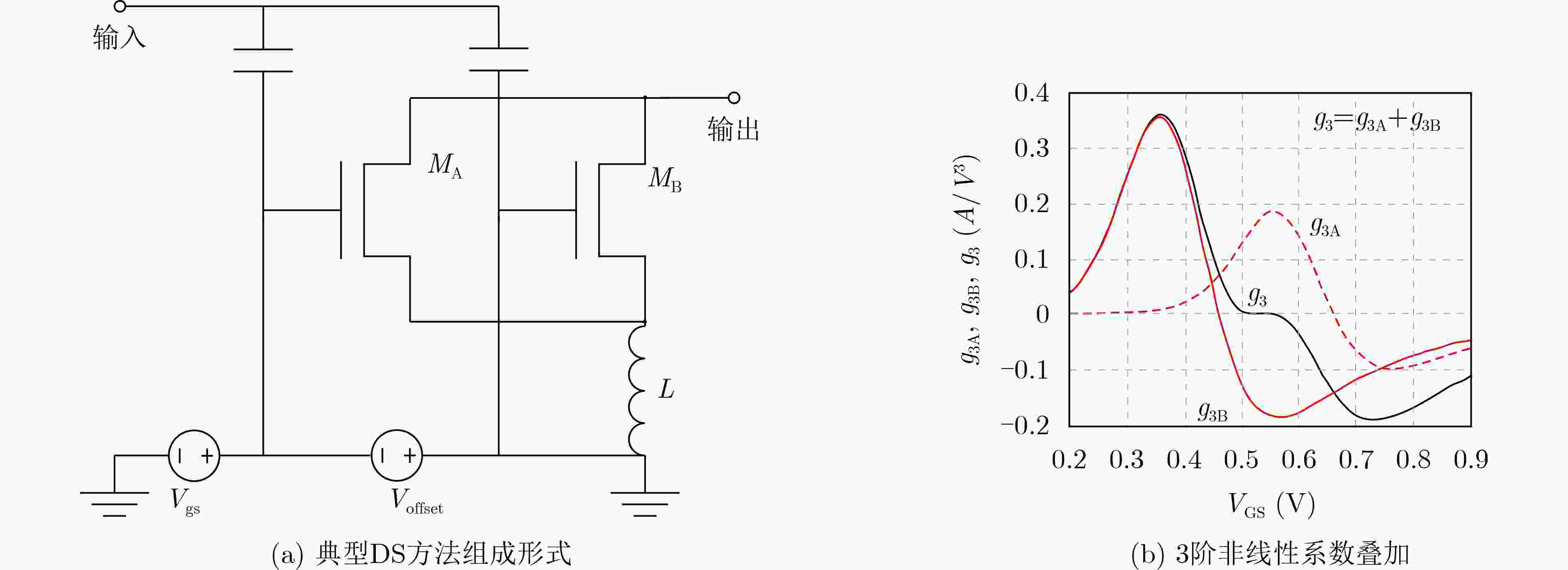
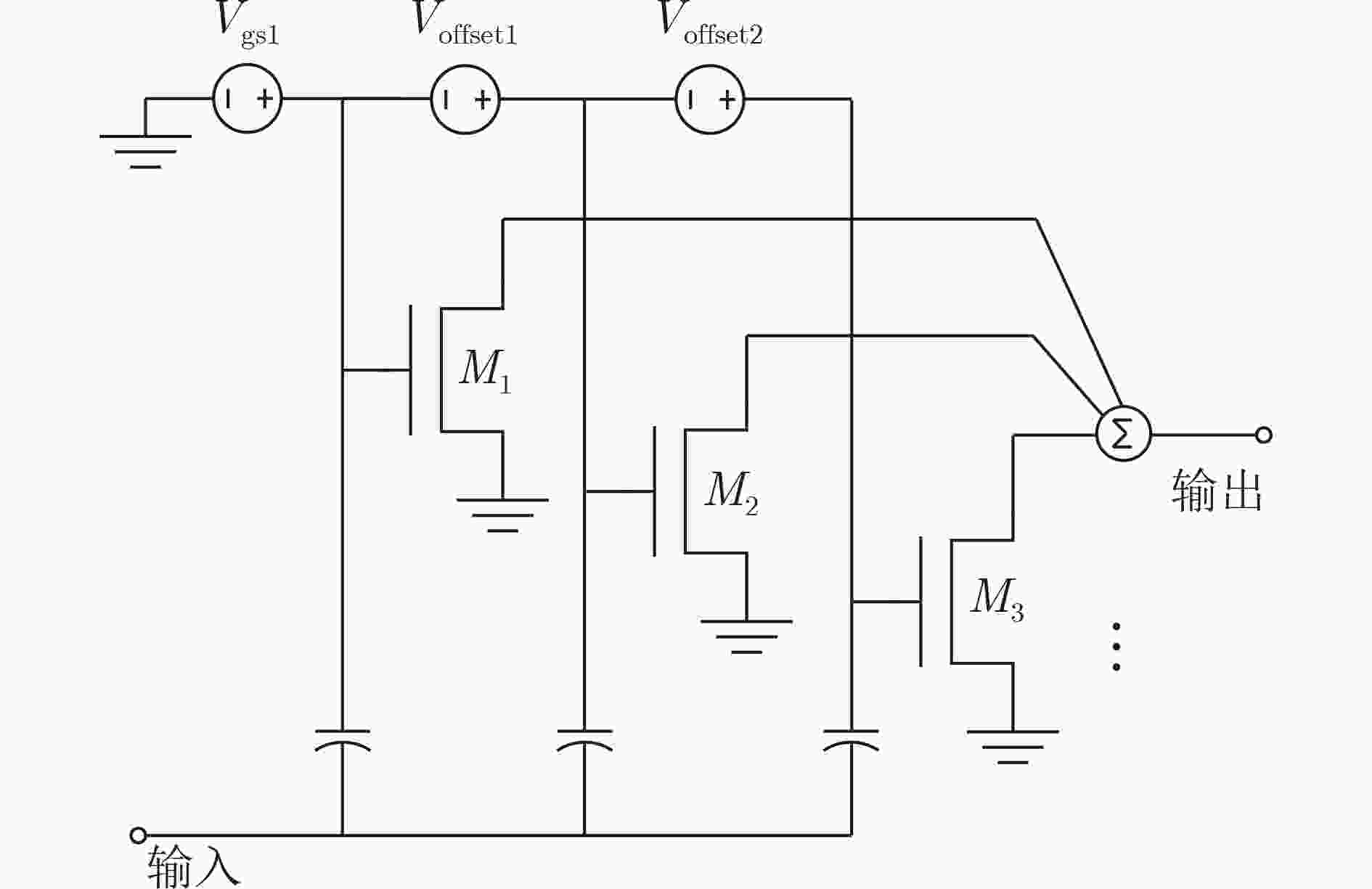
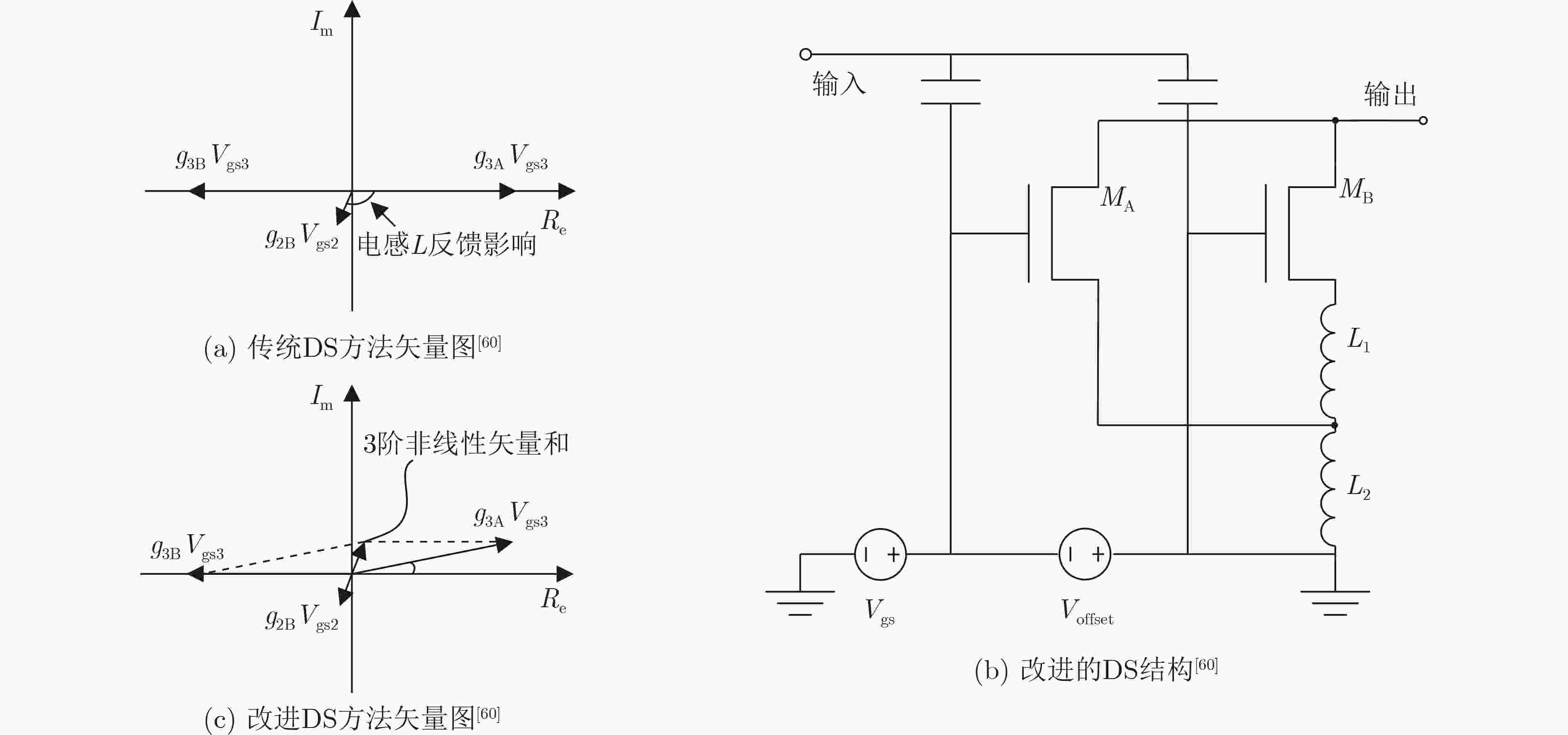
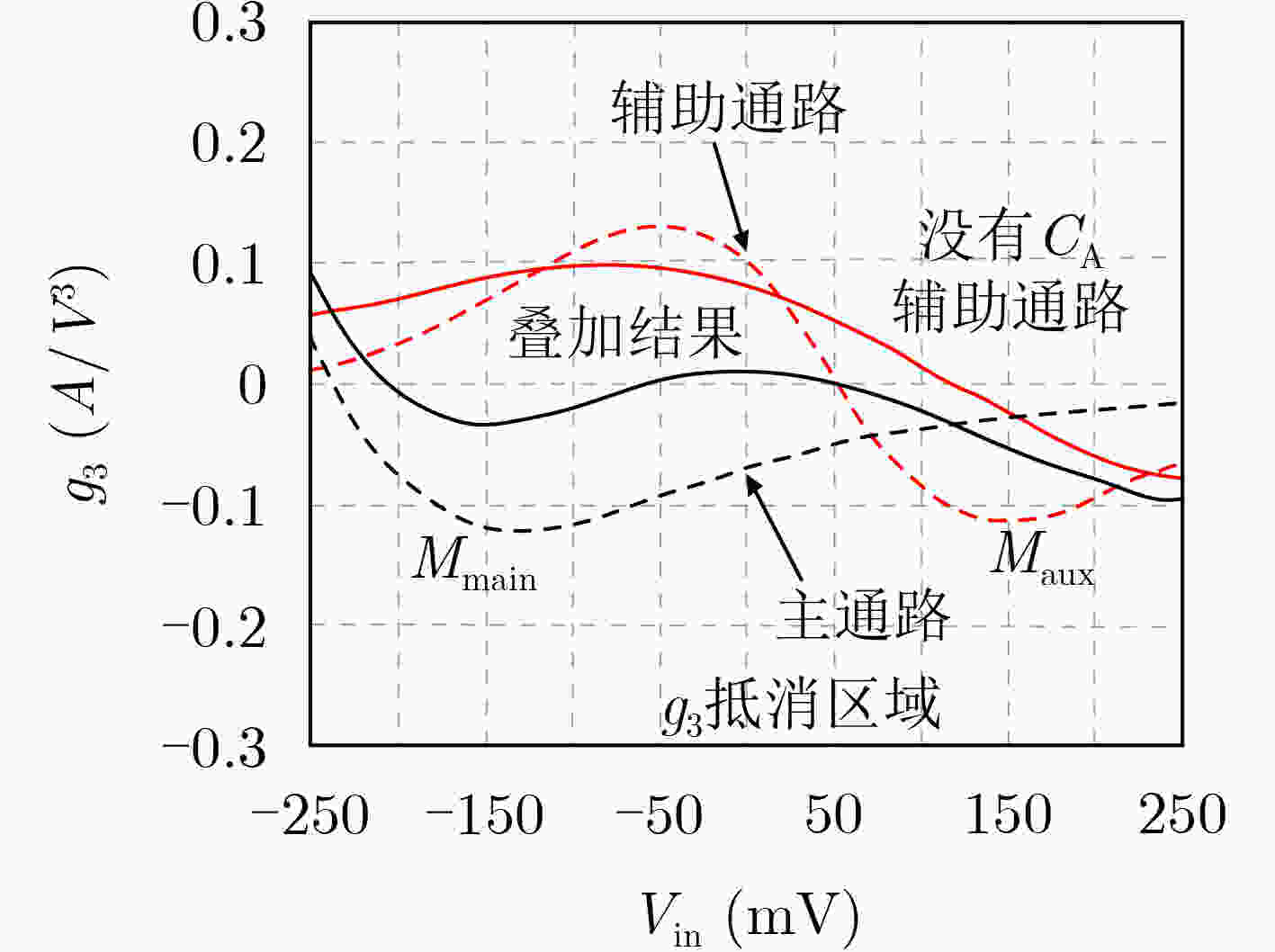

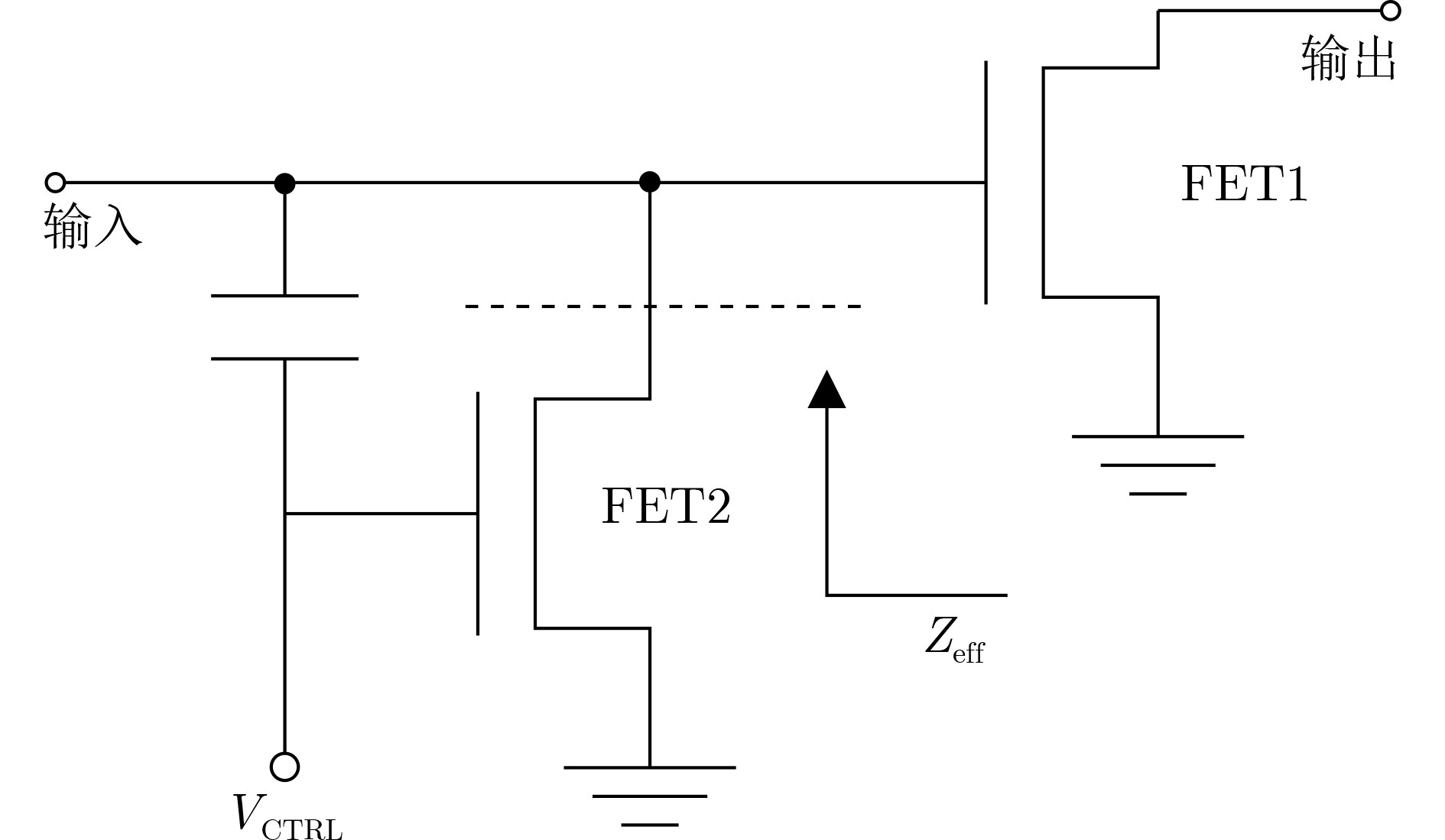
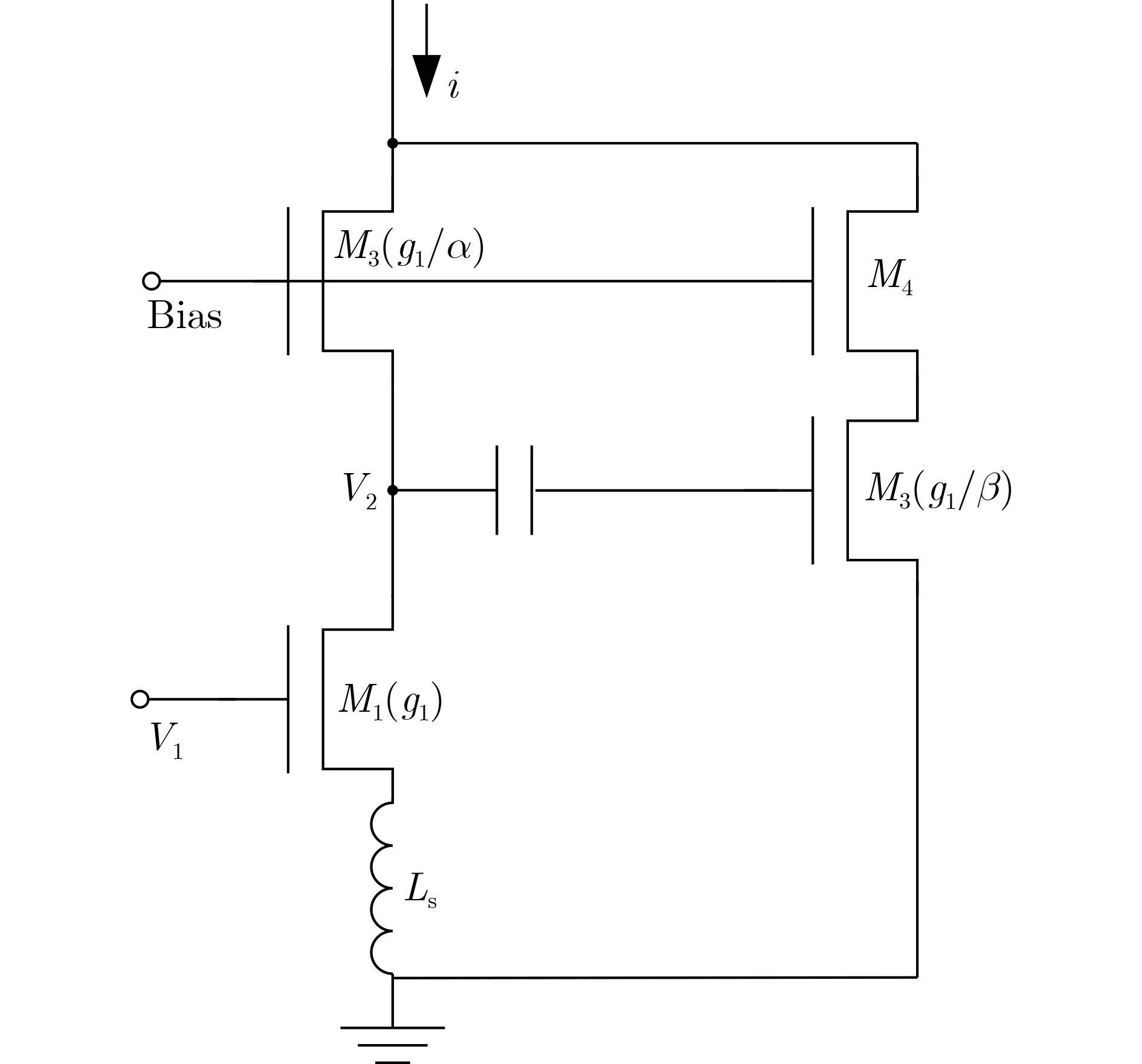
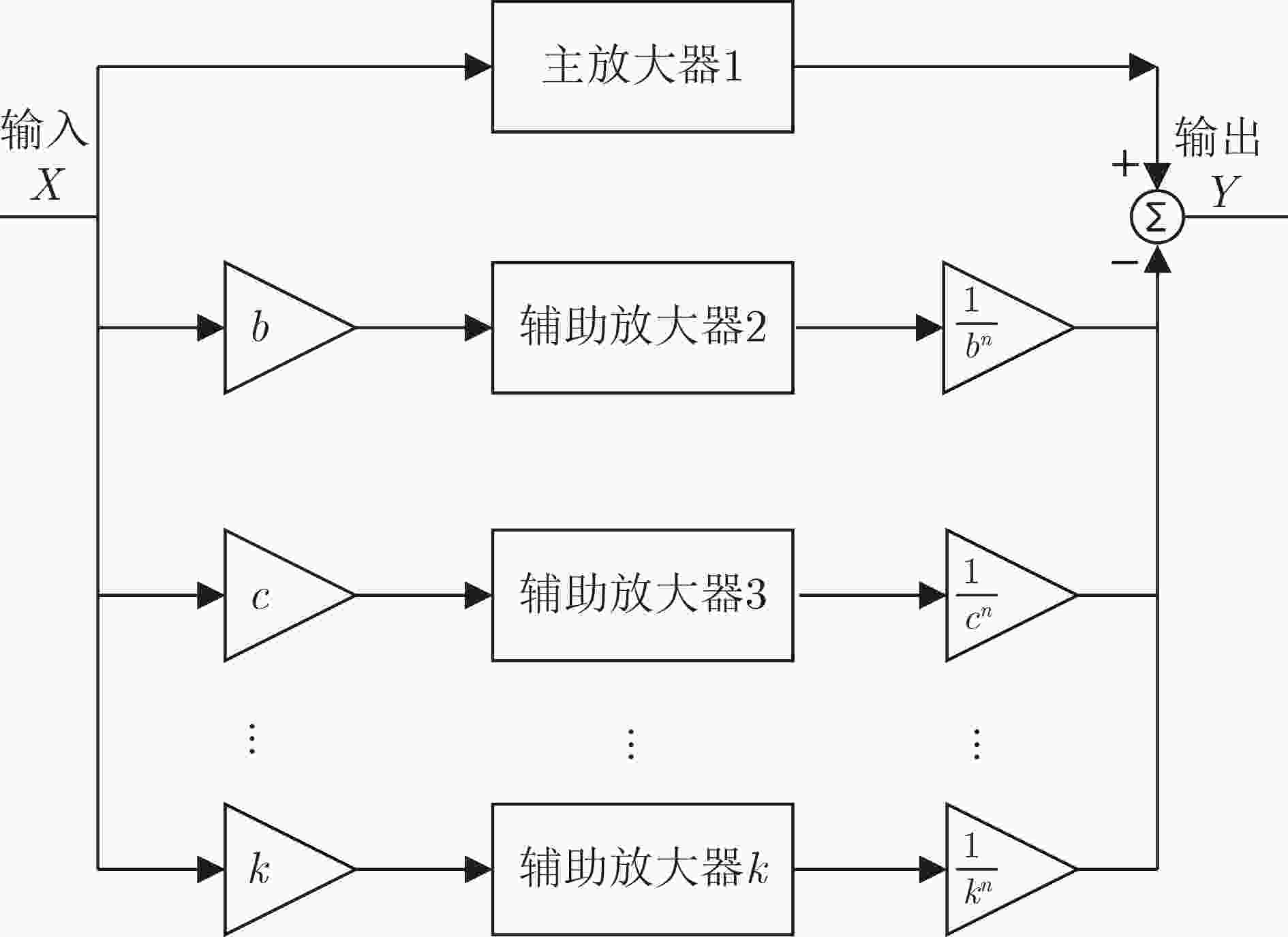
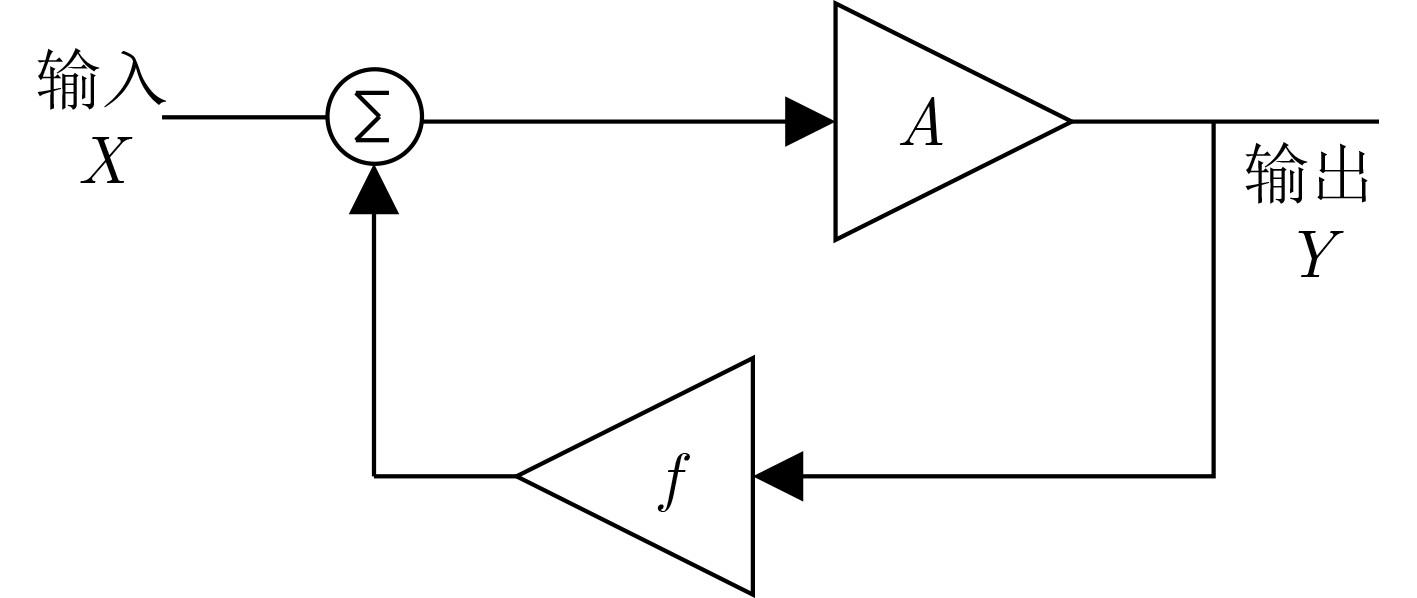


 下载:
下载:
